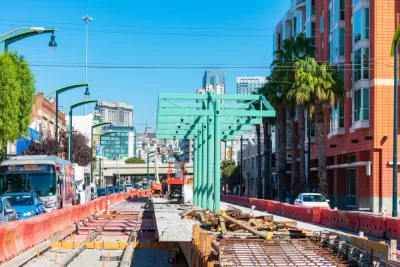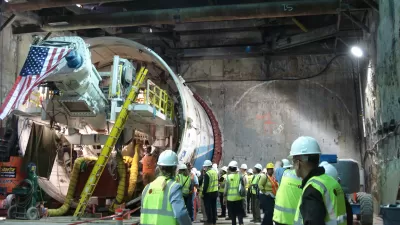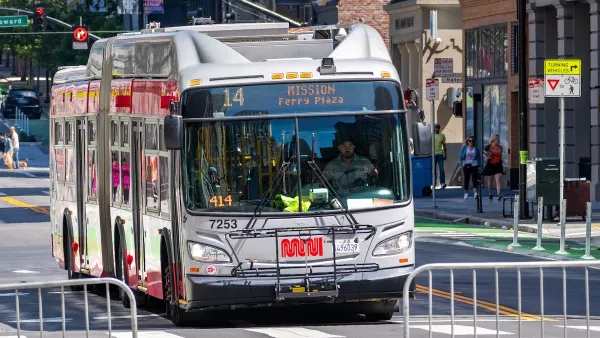San Francisco’s first north-south subway opened last weekend, extending service on Muni’s T light rail line.

San Francisco’s Central Subway, under construction for a decade and planned for four decades, finally opened to the public over the weekend.
“The subway cuts through the most densely populated parts of San Francisco and carries particular importance for the city’s Chinatown neighborhood, whose residents hope it will spur an economic revival,” according to an article by Ricardo Cano for the San Francisco Chronicle.
The first Central Subway train left Chinatown at 8 am on Saturday, and the Municipal Transportation Agency (Muni) is operating limited weekend service through the first week of January, according to the article. “When it opens for full service on Jan. 7, the T line will take riders from Bayview-Hunters Point to Chinatown via the city’s first north-south subway and connect riders to BART, Caltrain and Muni’s other light-rail lines on Market Street,” writes Cano.
More details on the long past and the potential future of the subway are available from a separate article by Cano and J.D. Morris published a few days before the opening.
The subway opens four years behind schedule and 20 percent over budget, attracting stinging criticism right up until opening day.
FULL STORY: Crowds greet delayed opening of S.F.’s Central Subway to Chinatown

Maui's Vacation Rental Debate Turns Ugly
Verbal attacks, misinformation campaigns and fistfights plague a high-stakes debate to convert thousands of vacation rentals into long-term housing.

Planetizen Federal Action Tracker
A weekly monitor of how Trump’s orders and actions are impacting planners and planning in America.

In Urban Planning, AI Prompting Could be the New Design Thinking
Creativity has long been key to great urban design. What if we see AI as our new creative partner?

King County Supportive Housing Program Offers Hope for Unhoused Residents
The county is taking a ‘Housing First’ approach that prioritizes getting people into housing, then offering wraparound supportive services.

Researchers Use AI to Get Clearer Picture of US Housing
Analysts are using artificial intelligence to supercharge their research by allowing them to comb through data faster. Though these AI tools can be error prone, they save time and housing researchers are optimistic about the future.

Making Shared Micromobility More Inclusive
Cities and shared mobility system operators can do more to include people with disabilities in planning and operations, per a new report.
Urban Design for Planners 1: Software Tools
This six-course series explores essential urban design concepts using open source software and equips planners with the tools they need to participate fully in the urban design process.
Planning for Universal Design
Learn the tools for implementing Universal Design in planning regulations.
planning NEXT
Appalachian Highlands Housing Partners
Mpact (founded as Rail~Volution)
City of Camden Redevelopment Agency
City of Astoria
City of Portland
City of Laramie





























